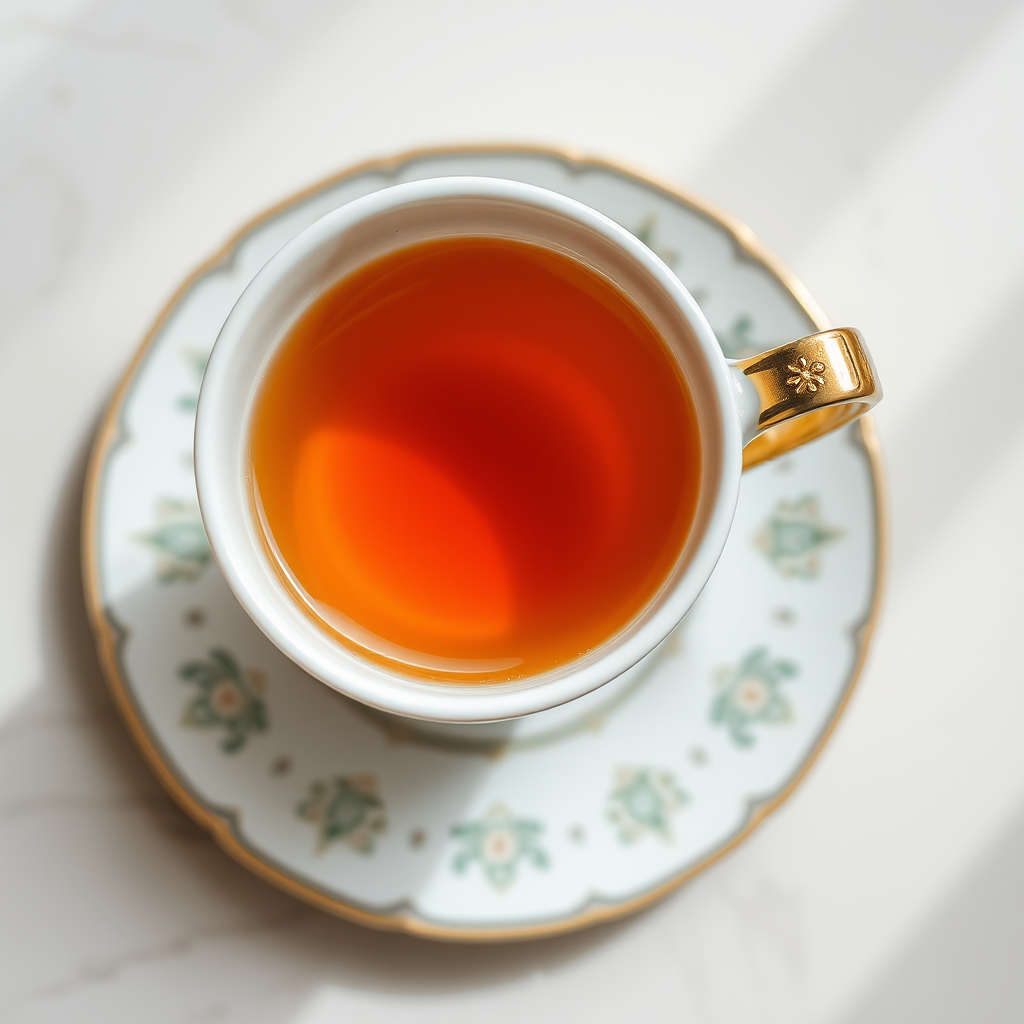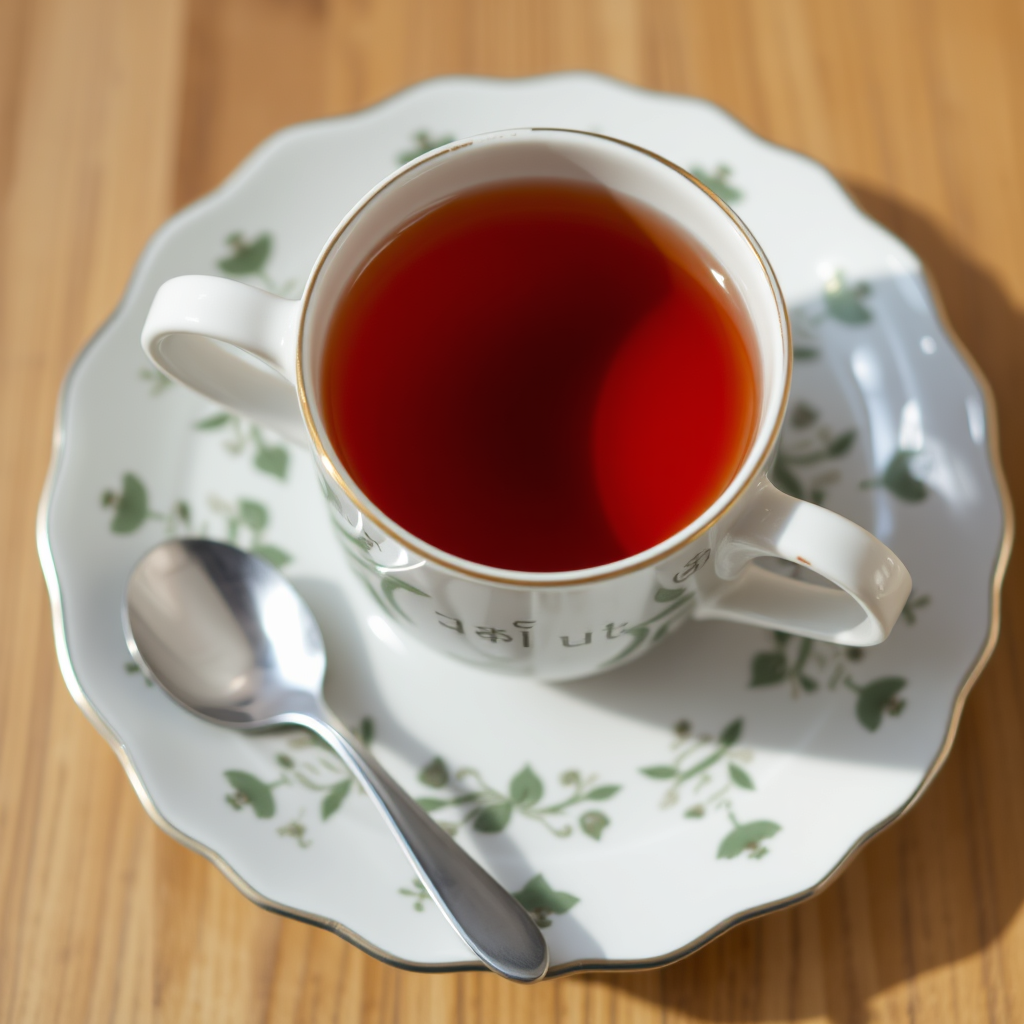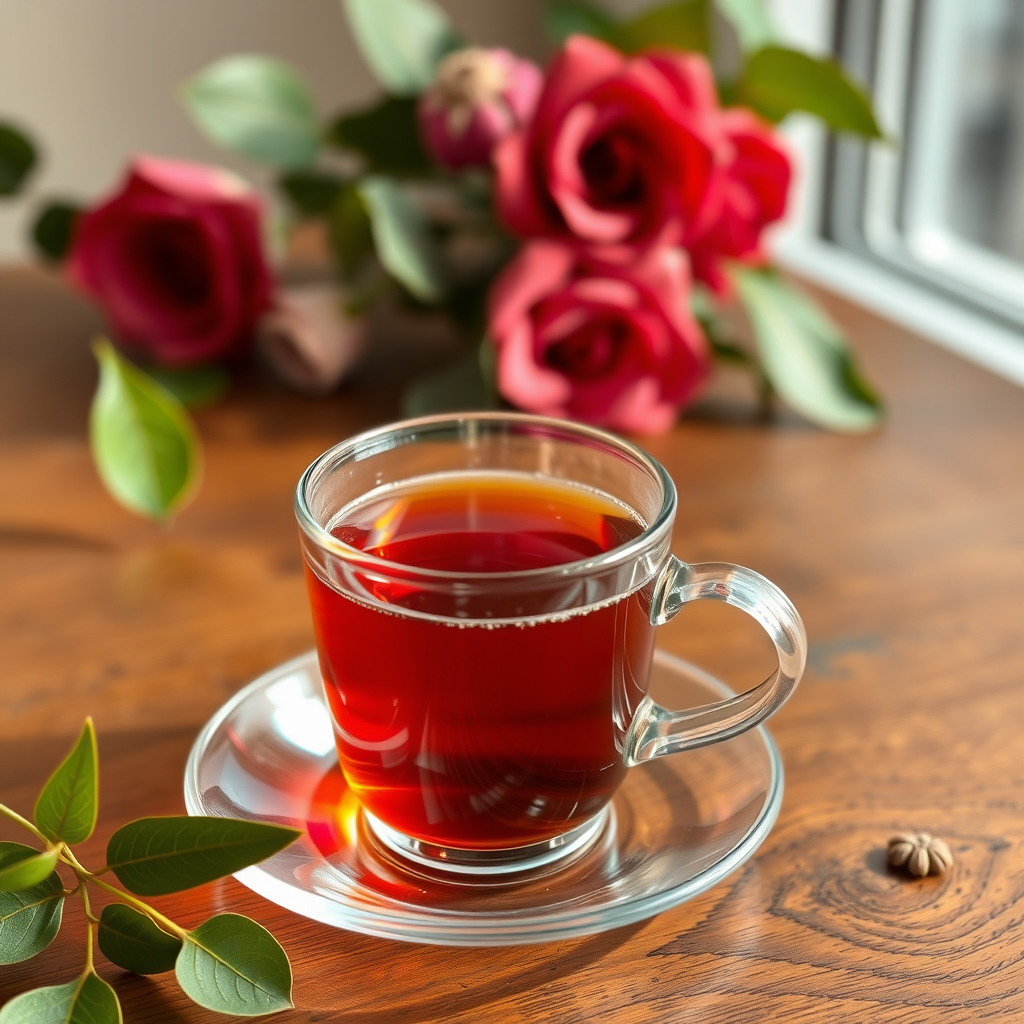
The Teacup Psychology
The Teacup Psychology As Threshold – Entering A State Of Intentional Pause
Crossing From Noise Into Stillness
A teacup is not merely a container—it is a threshold. Its presence signals a shift from external urgency to internal quiet. The act of reaching for it, filling it, and holding it initiates a psychological transition. This moment is not passive—it is a deliberate crossing. The warmth of the cup activates tactile receptors that signal safety. The aroma of tea engages the limbic system, triggering memory and emotional regulation. The visual simplicity of the cup reinforces cognitive calm and a state of relax. In this way, the teacup becomes a portal, not to caffeine, but to clarity.
| Sensory Input | Psychological Response | Neural Activation |
|---|---|---|
| Warmth | Safety, grounding | Somatosensory cortex |
| Aroma | Memory, emotional recall | Limbic system |
| Visual symmetry | Cognitive ease, focus | Prefrontal cortex |

The Pouring Gesture – Releasing Control To Regain It
Flow As Emotional Metaphor
Pouring tea is a gesture of surrender. It requires patience, precision, and trust in gravity. Psychologically, this act mirrors the release of tension. The slow arc of liquid from kettle to cup mimics the descent from hyperarousal to regulation. The sound of pouring—soft, rhythmic, contained—acts as auditory feedback for emotional pacing. In therapeutic terms, this is a form of micro-regulation. The body slows. The breath aligns. The mind follows. Pouring is not just preparation—it is recalibration.
| Action | Emotional Parallel | Therapeutic Function |
|---|---|---|
| Pouring tea | Letting go | Micro-regulation |
| Watching steam | Visual meditation | Breath alignment |
| Hearing the pour | Auditory pacing | Nervous system downshift |
Temperature As Threshold – Mapping Heat To Emotional States
Warmth As A Signal Of Safety
The temperature of tea is not incidental—it is symbolic. Warm liquids activate receptors that signal comfort and reduce cortisol. Cold drinks, by contrast, stimulate alertness and vigilance. Choosing warmth is a psychological declaration: I choose calm. The act of sipping slowly from a warm cup reinforces this choice. It is a form of embodied cognition—where physical sensation shapes mental state. In trauma recovery, warm liquids are often used to anchor the body in the present. The teacup becomes a tool of emotional regulation.
| Temperature Range | Psychological Effect | Recommended Use Case |
|---|---|---|
| 60–70°C | Comfort, grounding | Emotional regulation |
| 40–50°C | Gentle stimulation | Morning focus |
| <30°C | Alertness, vigilance | Cognitive activation |
Aroma As Memory – The Olfactory Archive Of Emotion
Scent As Emotional Retrieval
The scent of tea is a mnemonic device. It bypasses language and activates memory directly. Jasmine may evoke childhood. Earl Grey may recall a mentor. Green tea may signal discipline. These associations are not random—they are encoded through repetition. The olfactory bulb connects directly to the amygdala and hippocampus, making scent one of the most powerful emotional triggers. A cup of tea, then, is not just a beverage—it is a portal to the past. It allows the drinker to choose which memory to summon, which emotion to revisit, which story to re-enter.
| Tea Type | Common Emotional Association | Memory Activation Zone |
|---|---|---|
| Jasmine | Nostalgia, gentleness | Hippocampus |
| Earl Grey | Authority, mentorship | Amygdala |
| Green Tea | Discipline, clarity | Prefrontal cortex |
The Cup’s Shape – Geometry As Emotional Architecture
Roundness As Containment
The shape of the teacup influences emotional perception. Rounded forms are associated with softness, safety, and containment. Sharp angles suggest alertness and defense. A teacup’s curvature invites the hand to cradle, not grip. This tactile invitation reinforces psychological openness. The rim’s width affects pacing—narrow rims encourage slower sips, wider rims allow faster consumption. In design psychology, these elements are not aesthetic—they are functional. The cup becomes an emotional architecture, guiding the drinker’s tempo, posture, and receptivity.
| Design Element | Psychological Cue | Behavioral Outcome |
|---|---|---|
| Rounded body | Safety, softness | Cradling, relaxation |
| Narrow rim | Precision, pacing | Slow sipping |
| Wide base | Stability, grounding | Anchored posture |
The Sip As Calibration – Measuring Emotional Readiness
Micro-Acts Of Self-Assessment
Each sip from a teacup is a diagnostic gesture. It gauges temperature, taste, and tension. The body responds instinctively—slowing breath, adjusting posture, recalibrating focus. Psychologically, sipping is a form of pacing. It prevents overwhelm by breaking time into manageable increments. The act is small, but its impact is cumulative. It teaches restraint, presence, and attunement. In therapeutic settings, sipping is used to anchor clients during moments of dysregulation. It is not indulgence—it is intervention.
| Sip Characteristic | Emotional Signal | Behavioral Response |
|---|---|---|
| Slow, deliberate | Readiness, calm | Prolonged focus |
| Fast, shallow | Restlessness, urgency | Need for grounding |
| Interrupted | Distraction, avoidance | Re-engagement required |
Tea As Boundary – Defining Space Through Ritual
The Cup As Perimeter
A cup of tea creates a psychological perimeter. It marks the beginning and end of a moment. When held, it signals “not now” to external demands. When placed down, it signals “I’m ready.” This boundary-setting is subtle but powerful. It allows the drinker to reclaim agency over time and attention. In environments of overstimulation, the teacup becomes a shield. It is not a wall—it is a frame. It defines the space in which restoration can occur.
| Tea Ritual Element | Boundary Function | Emotional Outcome |
|---|---|---|
| Holding the cup | Deflection of intrusion | Safety, autonomy |
| Pouring the tea | Initiation of pause | Transition, clarity |
| Finishing the cup | Closure of moment | Readiness, re-entry |
Shared Cups – The Psychology Of Communal Sipping
Synchronizing Emotion Through Ritual
When tea is shared, the cup becomes a conduit for connection. The act of pouring for another, waiting for their sip, and matching their pace creates emotional synchrony. This is not mimicry—it is resonance. In group settings, tea rituals foster trust and reduce social anxiety. The shared cup becomes a symbol of mutual respect. It equalizes status, softens tension, and invites dialogue. In cultures where tea is central, this ritual is not optional—it is foundational.
| Communal Gesture | Psychological Effect | Social Outcome |
|---|---|---|
| Pouring for others | Generosity, attunement | Trust, openness |
| Matching sip pace | Emotional mirroring | Empathy, connection |
| Offering refills | Inclusion, care | Belonging, reciprocity |
Tea As Mirror – Reflecting Internal States Through Preference
Flavor As Emotional Language
The type of tea you choose often reflects the drinker’s ideology and feelings at the time. Bold flavors suggest a need for stimulation. Subtle infusions suggest a desire for quiet. Herbal blends may signal healing. These choices are not random—they are expressive. Over time, patterns emerge. A person may reach for peppermint during stress, chamomile during grief, or oolong during creative flow. The teacup becomes a mirror—not of appearance, but of emotion.
| Tea Type | Emotional Reflection | Psychological Need |
|---|---|---|
| Peppermint | Tension, urgency | Cooling, release |
| Chamomile | Sadness, fatigue | Comfort, softness |
| Oolong | Curiosity, engagement | Complexity, stimulation |

The Empty Cup – Closure As Psychological Integration
Ending As A Form Of Wholeness
An empty teacup is not a void—it is a signal of completion. It marks the end of a ritual, the integration of experience. Psychologically, this closure is essential. It allows the drinker to transition from inward reflection to outward engagement. Leaving a cup half-full can create emotional residue—unfinished thoughts, lingering tension. Finishing the tea, then, is not just consumption—it is a refill of all senses. It says – I have paused, I have felt, I am ready.
| Cup State | Psychological Meaning | Emotional Implication |
|---|---|---|
| Full | Potential, anticipation | Readiness to begin |
| Half-full | Interruption, ambiguity | Need for continuation |
| Empty | Completion, integration | Readiness to re-engage |
Brewing As Becoming – The Transformation Of Water Into Meaning
Alchemy Of Intention
The act of brewing tea is a transformation—not just of liquid, but of self. Water, neutral and formless, becomes infused with character. This infusion mirrors the psychological process of becoming. The longer the steep, the deeper the flavor—just as prolonged reflection deepens emotional insight. Brewing is not passive—it is a negotiation between heat, time, and substance. The drinker chooses strength, clarity, and complexity. In this way, brewing becomes a metaphor for identity construction.
| Brewing Variable | Psychological Parallel | Emotional Outcome |
|---|---|---|
| Steep duration | Depth of reflection | Complexity, richness |
| Water temperature | Emotional intensity | Boldness, sharpness |
| Leaf quantity | Self-expression | Strength, assertiveness |
Tea As Anchor – Stabilizing The Mind In Transitional Spaces
Ritual As Resistance To Drift
In moments of transition—between tasks, moods, or environments—the mind seeks anchors. Tea provides one. Its ritual structure offers predictability, which calms the nervous system. The cup becomes a fixed point in a shifting landscape. This anchoring effect is especially potent in liminal spaces: early mornings, late nights, post-meeting silences. Tea does not solve chaos—it frames it. It says: here is a moment that belongs to you. Here is a shape in the blur.
| Transitional Moment | Tea’s Anchoring Role | Psychological Benefit |
|---|---|---|
| Morning uncertainty | Establishes rhythm | Reduces anticipatory stress |
| Post-task fatigue | Marks closure | Enhances recovery |
| Emotional drift | Re-centers attention | Restores coherence |
The Teacup’s Weight – Tactile Feedback And Emotional Gravity
Holding As Grounding
The weight of a teacup matters. It provides tactile feedback that reinforces presence. A heavier cup demands attention. A lighter cup invites ease. This physical sensation translates into emotional gravity. Holding a cup with both hands activates bilateral stimulation—a technique used in trauma therapy to balance hemispheric activity. The hand’s engagement with the cup becomes a form of grounding. It says: I am here. I am holding. I am safe.
| Cup Weight | Tactile Signal | Emotional Interpretation |
|---|---|---|
| Heavy | Seriousness, depth | Grounding, focus |
| Light | Ease, playfulness | Softness, openness |
| Balanced | Stability, neutrality | Calm, readiness |
Tea As Threshold Language – Signaling Emotional Availability
The Cup As Social Cue
Offering tea is a form of emotional language. It signals availability, hospitality, and care. Refusing tea can signal boundaries, fatigue, or withdrawal. These cues are culturally encoded but psychologically universal. The teacup becomes a medium of communication—nonverbal, symbolic, precise. In therapeutic settings, tea rituals can be used to initiate dialogue or mark emotional transitions. The cup speaks before the person does.
| Tea Gesture | Emotional Message | Social Interpretation |
|---|---|---|
| Offering tea | Openness, welcome | Invitation to connect |
| Accepting tea | Receptivity, trust | Willingness to engage |
| Declining tea | Withdrawal, boundary | Need for solitude |
The Final Sip – Closure As Emotional Integration
Ending With Intention
The final sip of tea is not just the end of a beverage—it is the integration of experience. It marks the completion of a ritual, the absorption of warmth, the settling of thought. Psychologically, closure is essential. It allows the mind to transition from inward reflection to outward action. Leaving tea unfinished can create emotional residue—unresolved tension, lingering distraction. Finishing the cup is a declaration: I have paused. I have felt. I am ready to return.
| Sip Status | Emotional State | Psychological Implication |
|---|---|---|
| Final sip taken | Completion, readiness | Integration, clarity |
| Cup left unfinished | Ambiguity, avoidance | Emotional residue |
| Cup refilled | Prolonged reflection | Extended proce |
Silence Between Sips – The Space Where Thought Settles
Stillness As Cognitive Integration
The silence between sips is not empty—it is where meaning consolidates. In that pause, the mind is neither consuming nor preparing. It is absorbing. This interstitial quiet allows emotional fragments to settle, thoughts to align, and sensory input to integrate. The teacup becomes a metronome for introspection. Each sip is a beat. Each silence is a rest. In therapeutic terms, this rhythm supports cognitive processing and emotional regulation. The cup orchestrates not just taste, but tempo.
| Moment Type | Cognitive Function | Emotional Effect |
|---|---|---|
| Sip | Sensory engagement | Activation, focus |
| Pause | Integration, reflection | Calm, clarity |
| Sequence of sips | Structured rhythm | Emotional pacing |
The Steam’s Drift – Visual Metaphor For Emotional Release
Watching Dissolution
Steam rising from a cup of tea is a visual metaphor for release. It is the visible exit of tension, the soft unraveling of heat into air. Watching steam drift upward engages the parasympathetic nervous system. It slows breath, softens gaze, and invites detachment from urgency. The ephemeral nature of steam mirrors the impermanence of emotion. It says: this feeling will pass. This moment will dissolve. The teacup becomes a stage for emotional rehearsal.
| Visual Element | Symbolic Meaning | Psychological Response |
|---|---|---|
| Rising steam | Letting go | Breath regulation |
| Curling motion | Emotional softness | Visual meditation |
| Dissipation | Impermanence | Acceptance, release |

The Cup’s Rim – Boundary Between Self And Substance
Edge As Interface
The rim of a teacup is the boundary between the external and the internal. It is where liquid meets lips, where warmth becomes sensation. Psychologically, this edge is an interface—it defines the threshold of experience. A chipped rim disrupts this boundary, creating discomfort or hesitation. A smooth rim invites trust. In design psychology, the rim’s texture, thickness, and curvature influence emotional receptivity. The cup’s edge is not just functional—it is symbolic of how we receive the world.
| Rim Characteristic | Sensory Impact | Emotional Interpretation |
|---|---|---|
| Smooth, rounded | Ease, comfort | Openness, trust |
| Thin, sharp | Precision, alertness | Caution, focus |
| Chipped | Disruption, fragility | Hesitation, withdrawal |
Tea As Emotional Cartography – Mapping Mood Through Infusion
Flavor As Terrain
Each tea type represents a psychological terrain. Black tea is mountainous—bold, structured, demanding. Green tea is forested—subtle, layered, introspective. Herbal blends are coastal—fluid, soothing, expansive. Choosing a tea is choosing a landscape to inhabit. The teacup becomes a compass, guiding the drinker through emotional geography. This cartography is not fixed—it shifts with mood, memory, and intention. The ritual of selection becomes a form of emotional mapping.
| Tea Landscape | Flavor Profile | Emotional Terrain |
|---|---|---|
| Mountain (Black) | Bold, tannic | Structure, intensity |
| Forest (Green) | Earthy, vegetal | Reflection, depth |
| Coast (Herbal) | Floral, fluid | Soothing, openness |
The Cup’s Shadow – Emotional Residue And Symbolic Echo
What Remains After The Ritual
When the tea is gone, the cup casts a shadow. This shadow is not just physical—it is emotional residue. It marks the space where warmth once was, where reflection occurred. Psychologically, shadows represent memory, echo, and aftermath. Observing the cup’s shadow invites contemplation of what was felt, what was released, what remains. The teacup becomes a symbol of transience—its shadow a reminder that every ritual leaves a trace.
| Shadow Element | Symbolic Function | Emotional Echo |
|---|---|---|
| Length | Duration of reflection | Depth of processing |
| Direction | Time of day | Mood alignment |
| Softness | Emotional clarity |
Conclusion – The Teacup As Emotional Architecture
Ritual As Restoration
A cup of tea is not a beverage—it is a blueprint. It maps the contours of emotion, the rhythm of thought, the architecture of presence. Every sip is a signal. Every pause is a perimeter. The teacup becomes a vessel not of liquid, but of legacy—holding memory, mood, and meaning in its curvature. In a world of acceleration, tea offers tempo. In a culture of noise, it offers silence. In moments of fragmentation, it offers form. To drink tea is to engage in emotional design. To hold the cup is to hold the self. And to finish the ritual is to re-enter the world—restored, re-centered, and redefined.
Join The Discussion – Share Your Rituals, Reflections, And Emotional Landscapes
Your Cup, Your Story
What does your teacup hold beyond liquid? Is it a memory, a boundary, a breath?
#TeacupAsThreshold #EmotionalArchitecture #SipAndSettle #TeaAsMemory #RitualOfRestoration #PsychologyOfTea #LegacyInLiquid #SteamAndStillness #TeaCartography #MindfulPouring #BoundaryByBrew #TeaAsDesign #EmotionalPacing #CupOfClarity #TeaRitualCollective





You always deliver high-quality information. Thanks again!